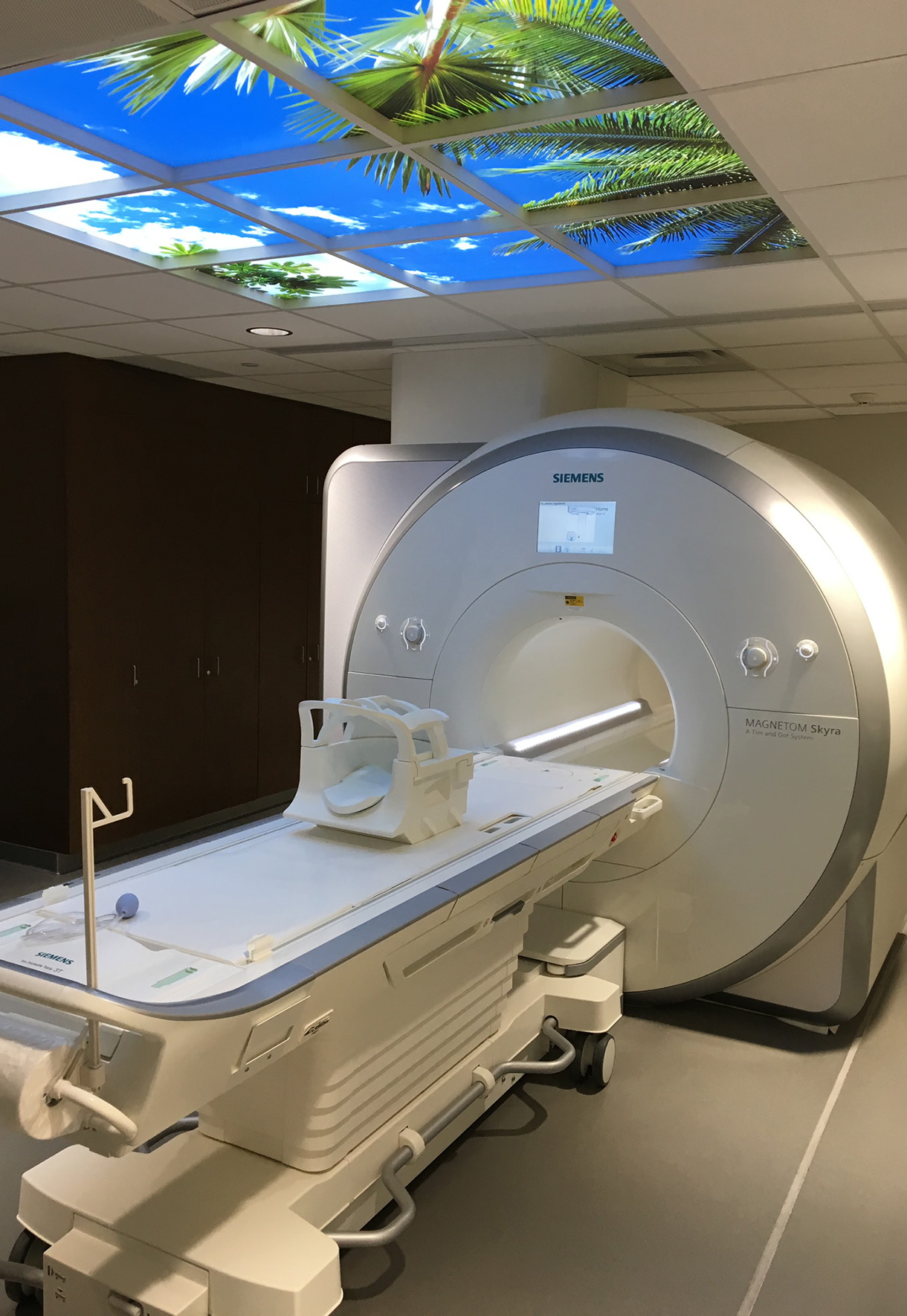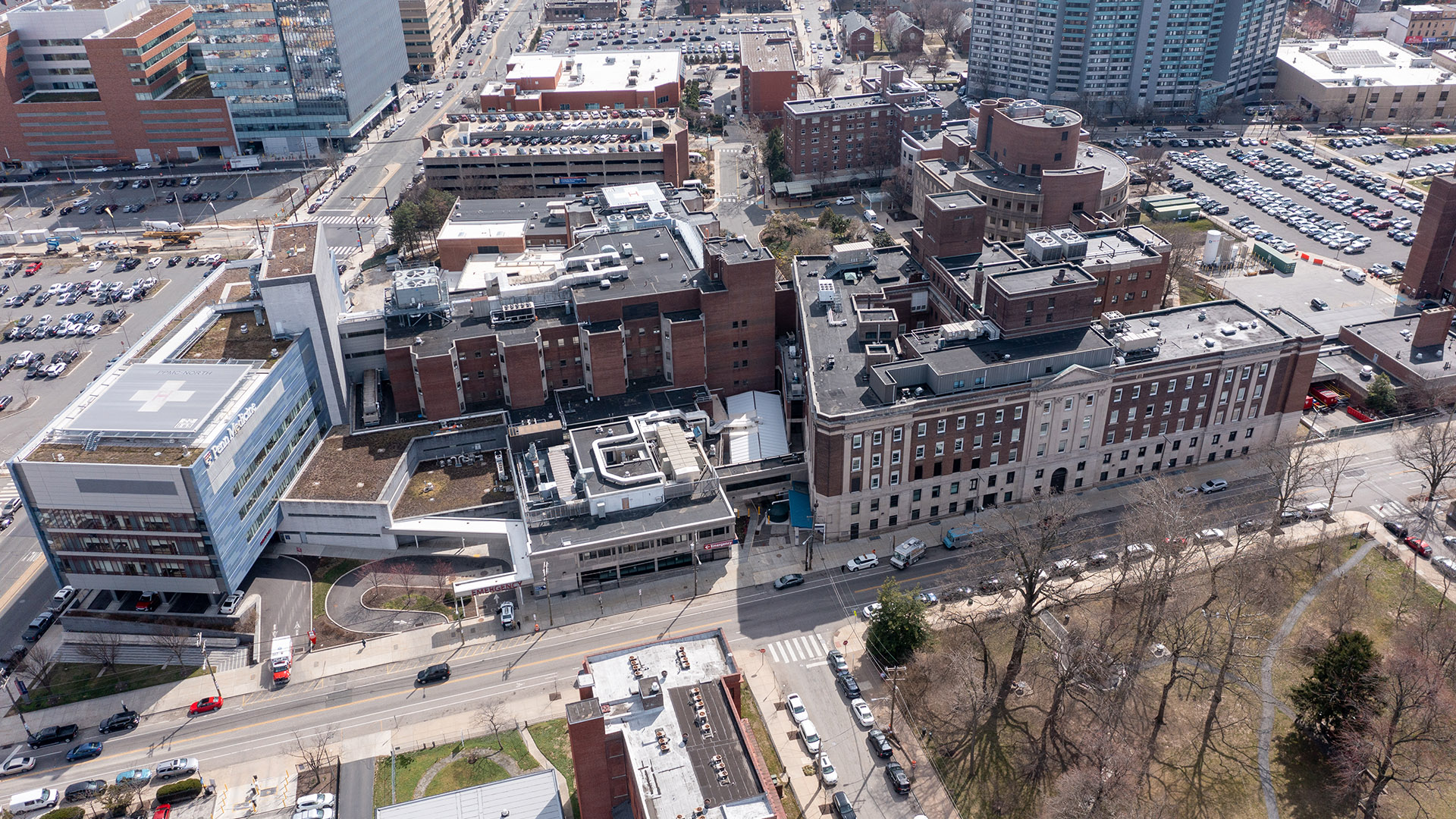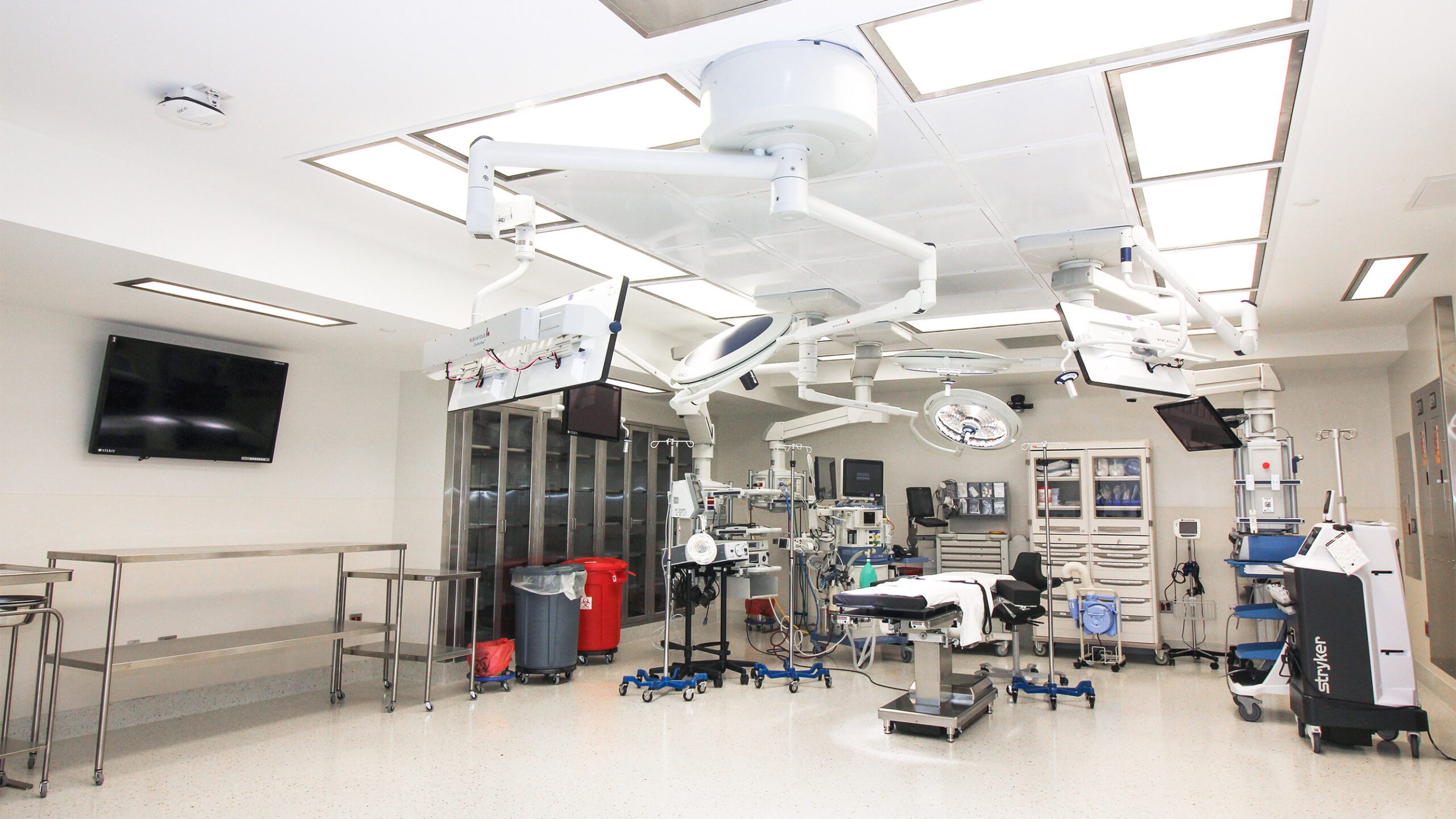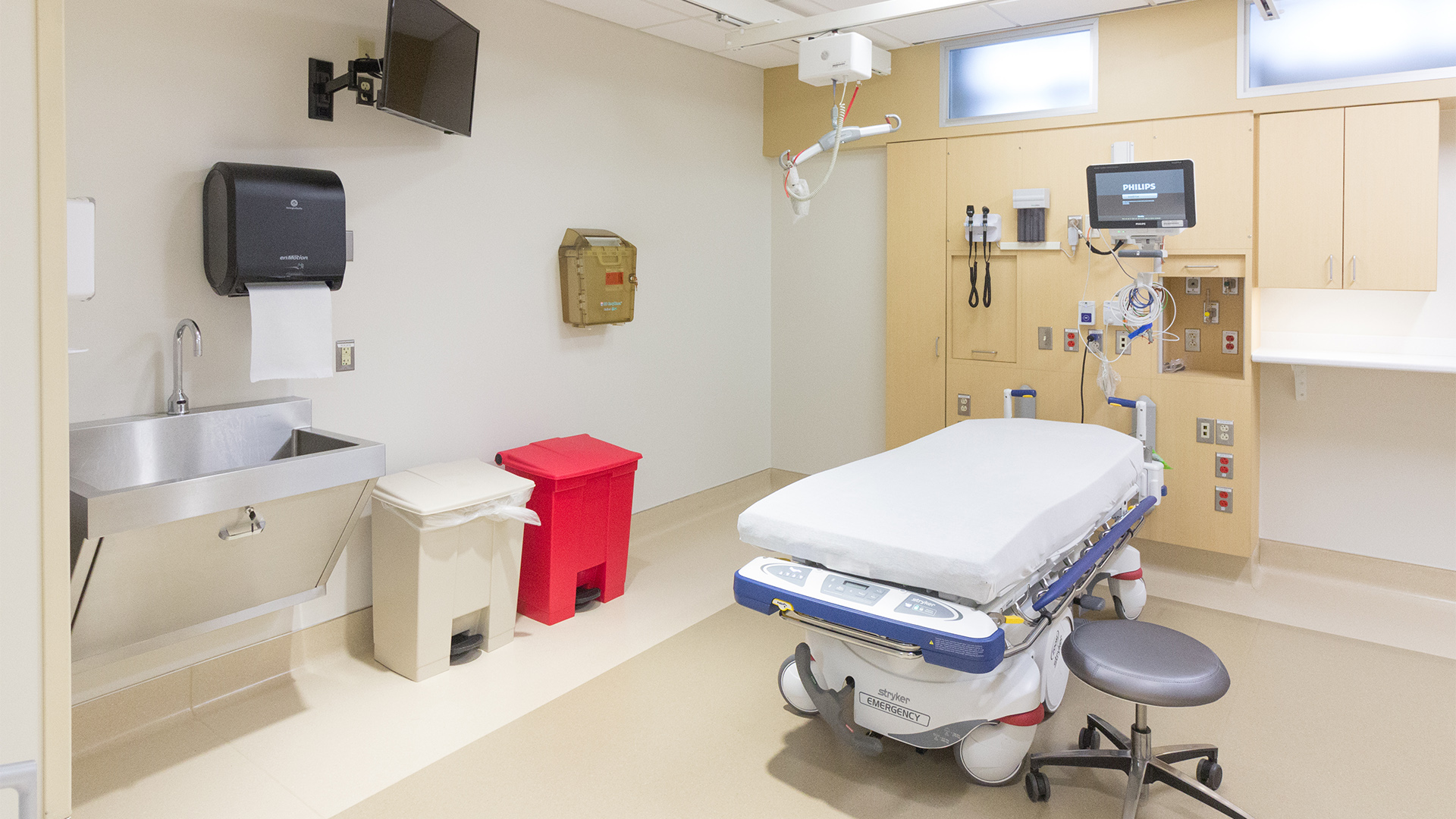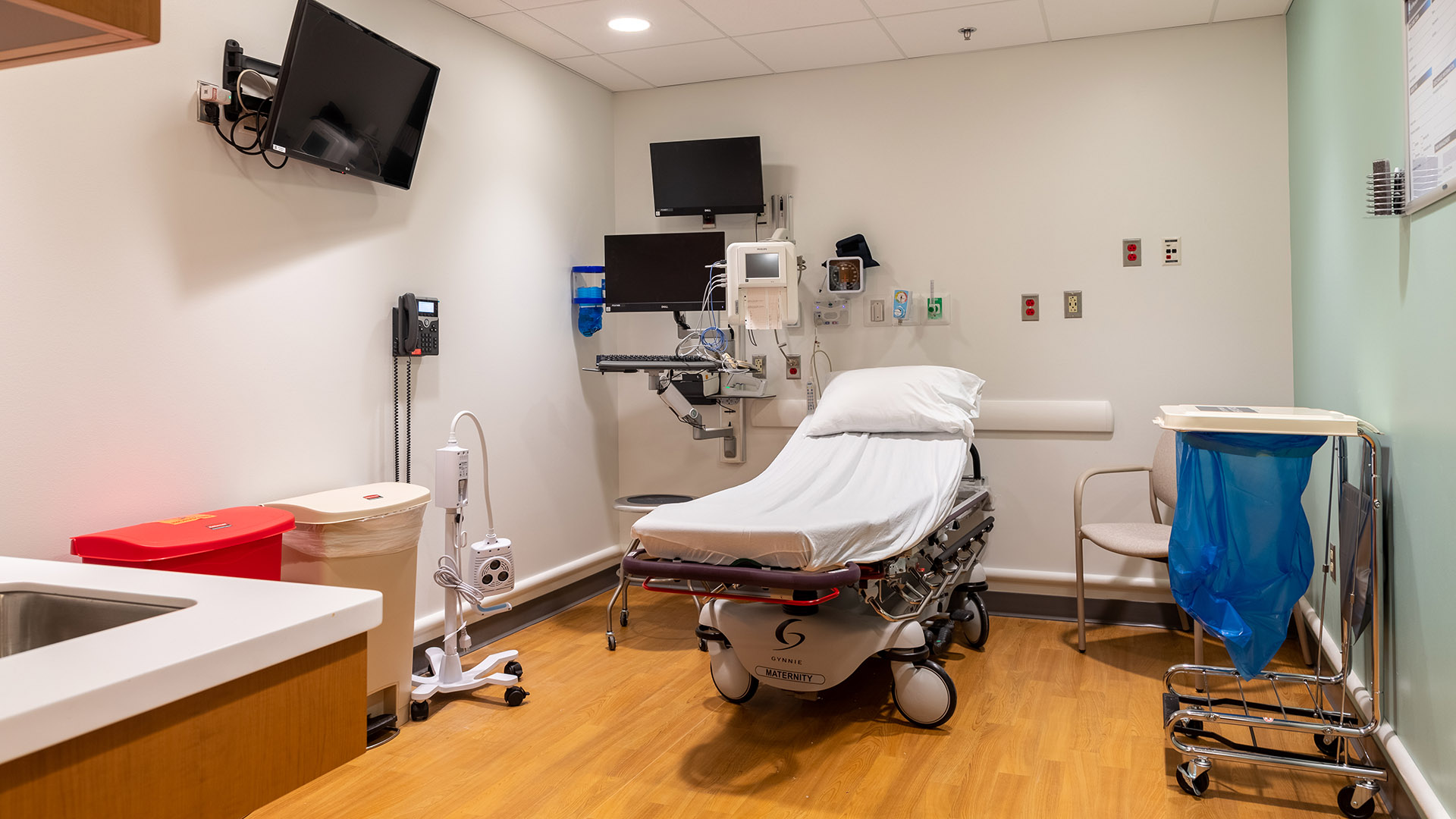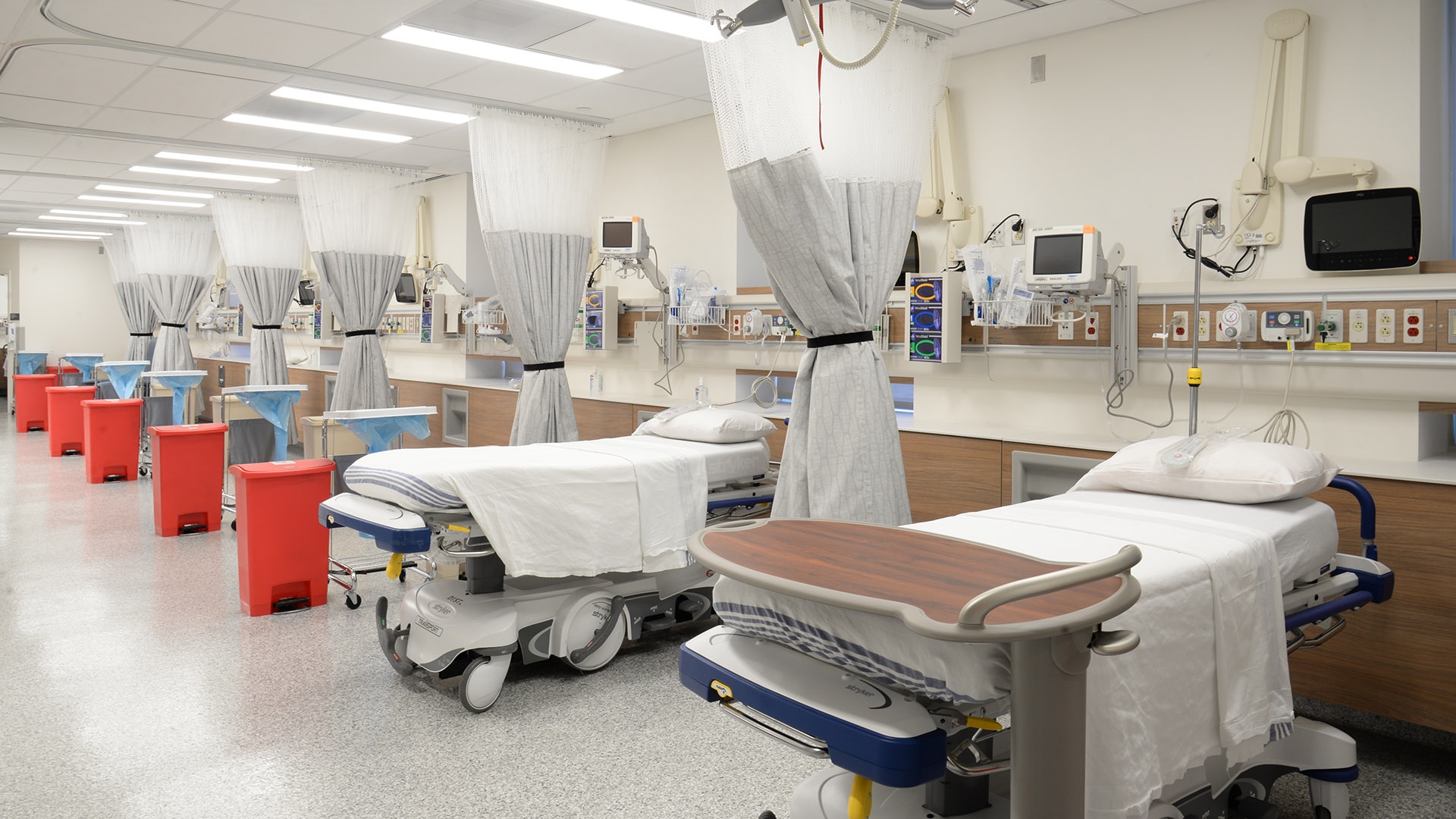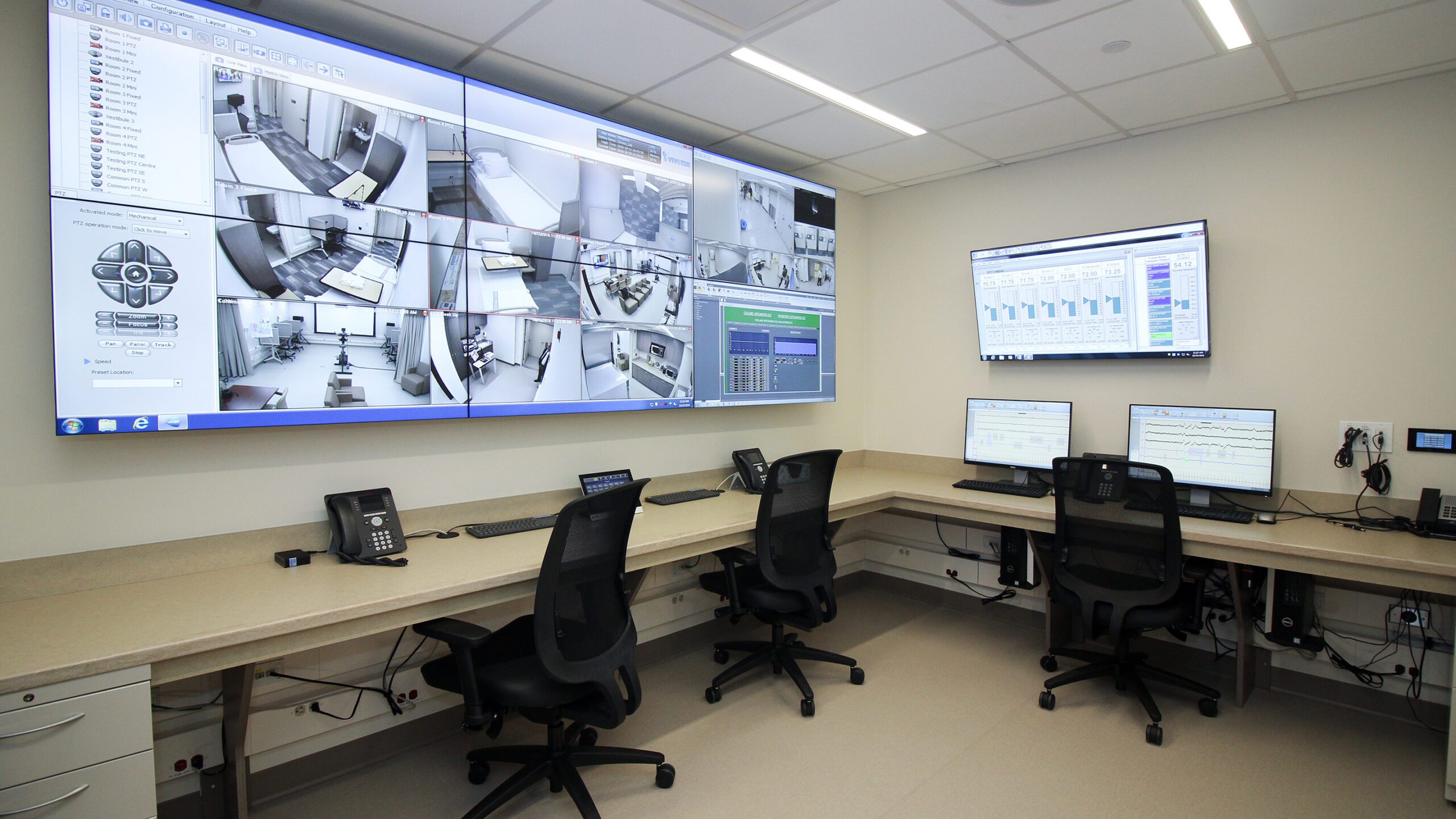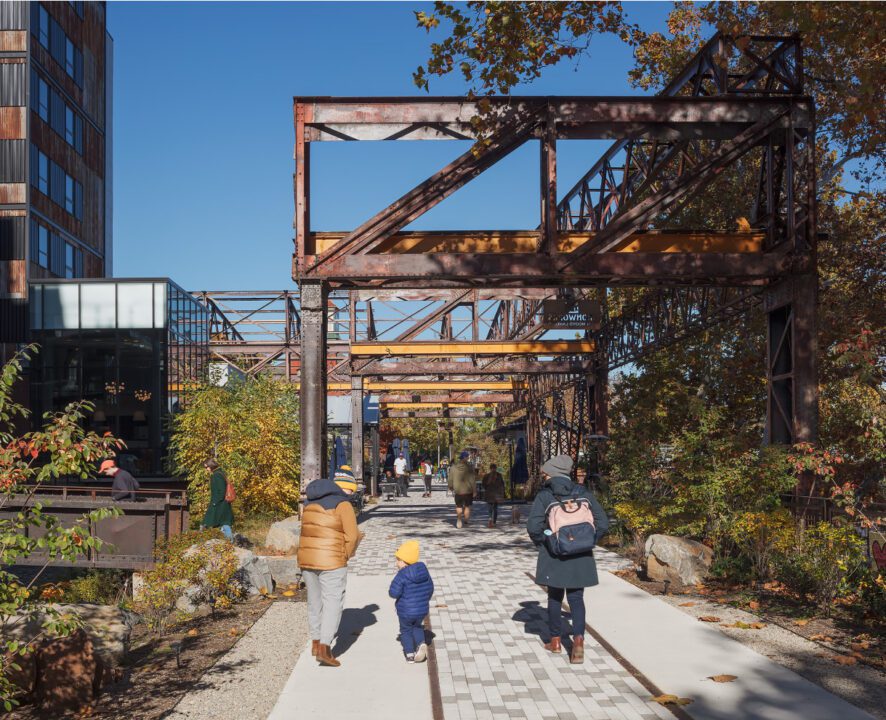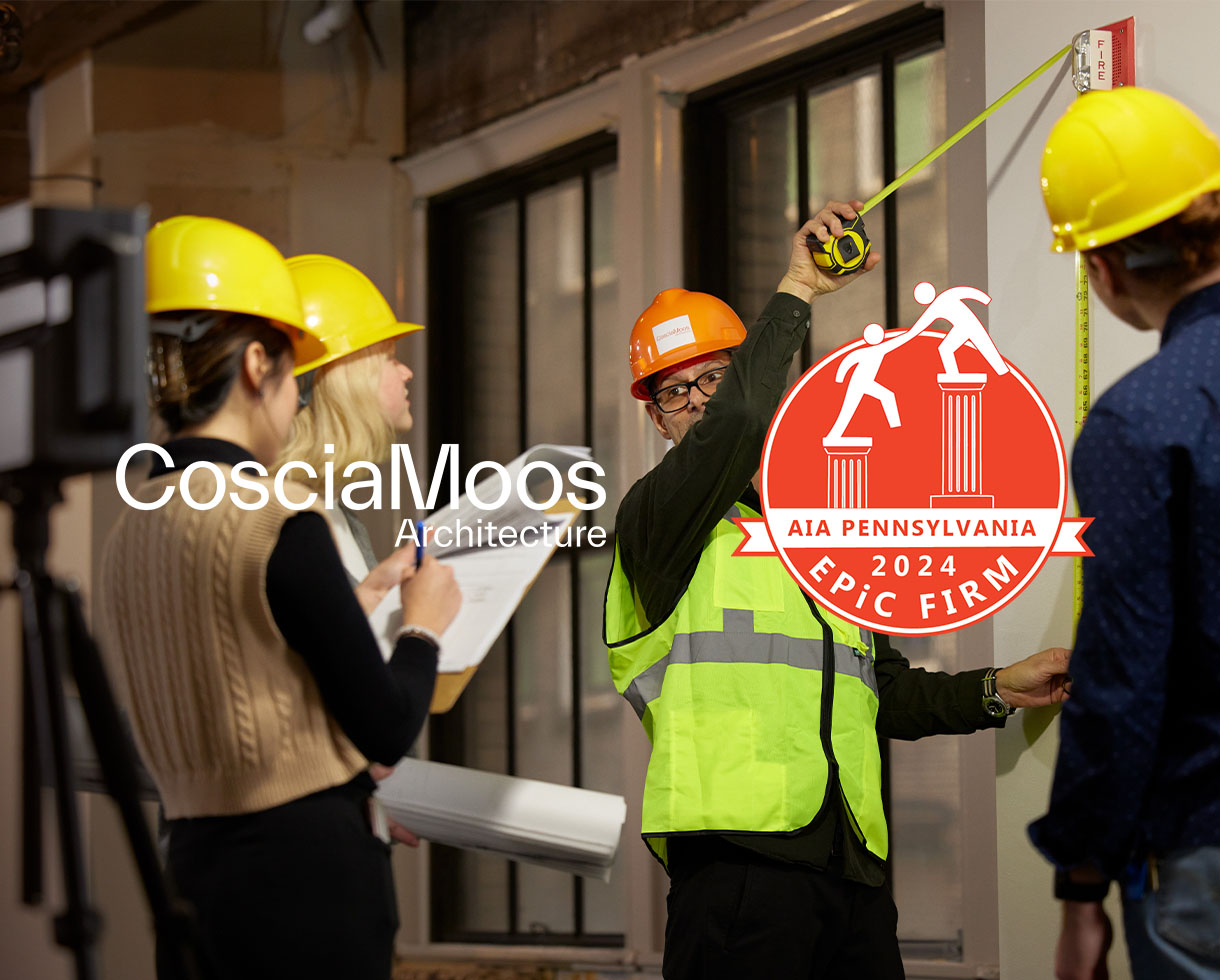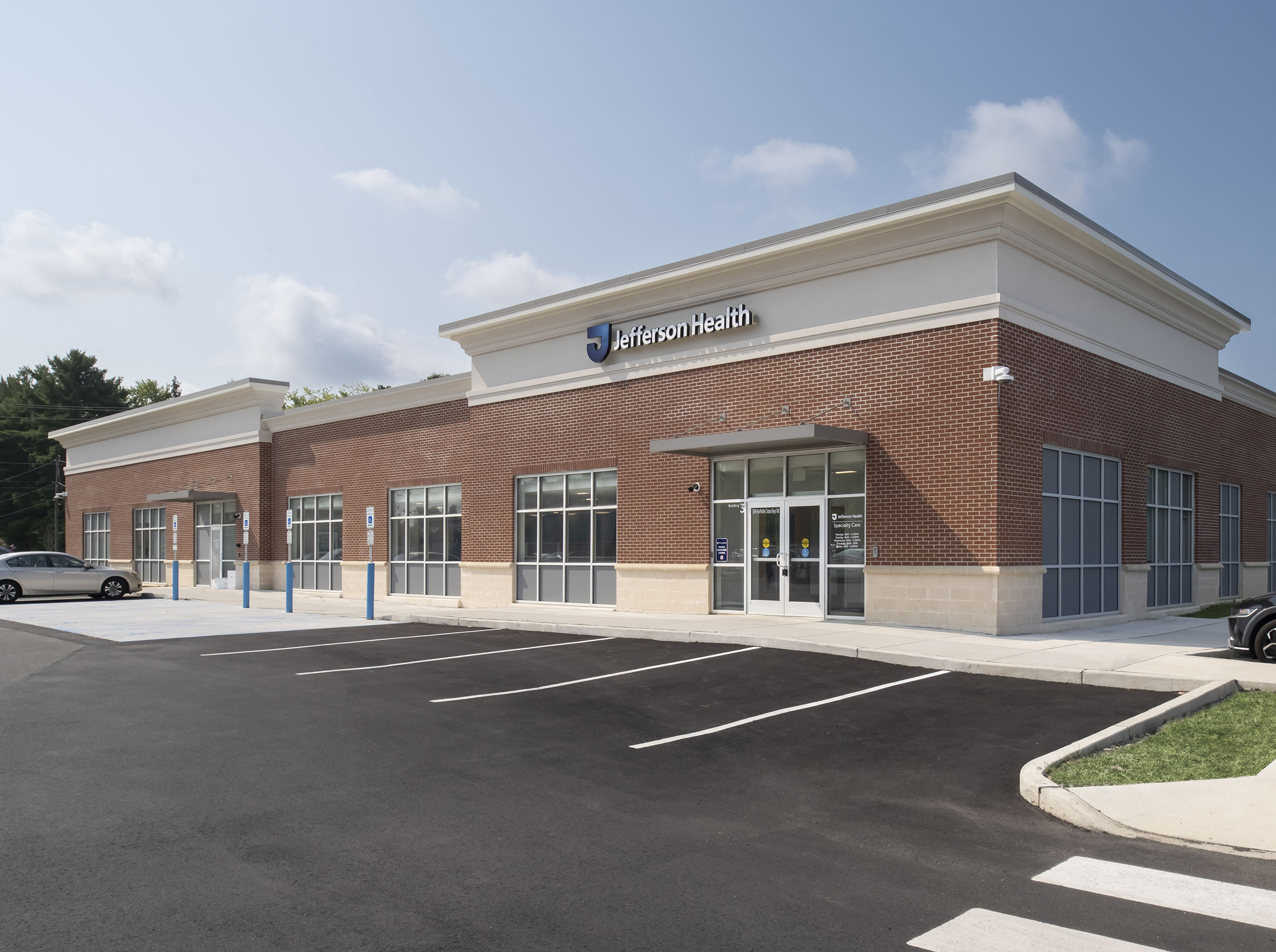For over a decade, our team has completed many projects within the Penn Presbyterian Medical Center.
Selected Projects Include:
Observation Unit Modular Structure
We worked with modular building provider Serenus to design an observation unit for Penn Presbyterian Medical Center. The hospital initially chose a modular solution to provide a swing space which would allow for phased renovation of other areas within the hospital. Due to the Hospital’s urban setting, the only available area to site the modular was a tight internal courtyard with a significant grade change. We took advantage of this grade change to minimize the transition between the hospital and elevated floor height of the modular building. Careful survey was required to ensure that the modular building fit within existing building elements on all four sides.
As construction ramped up to start in March 2020, the design team pivoted to convert what had been patient bays into private rooms and allow the entire unit to be under negative pressure relative to the hospital to treat patients with COVID-19. A fast track construction schedule allowed the unit to see its first patient two months after construction started.
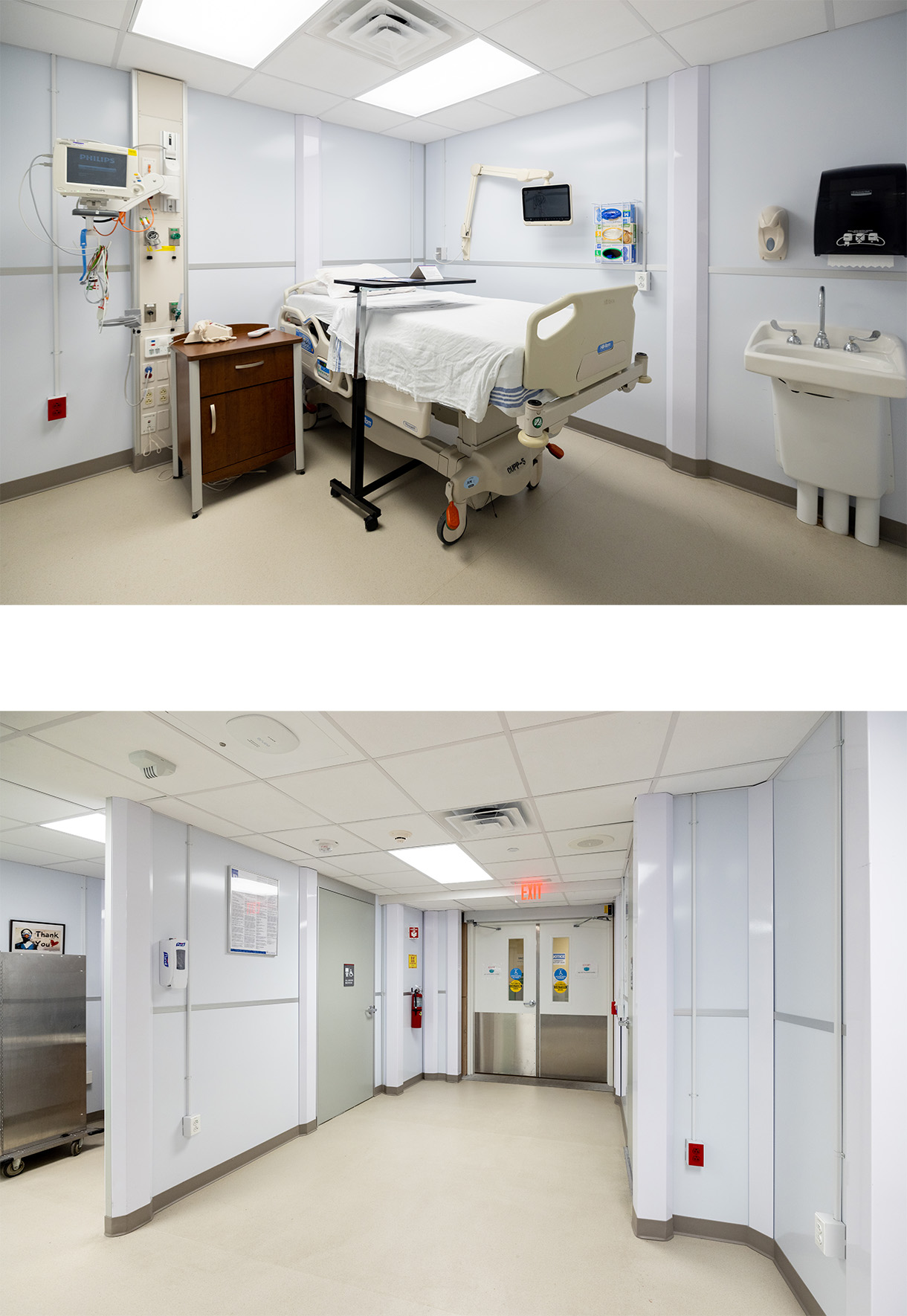
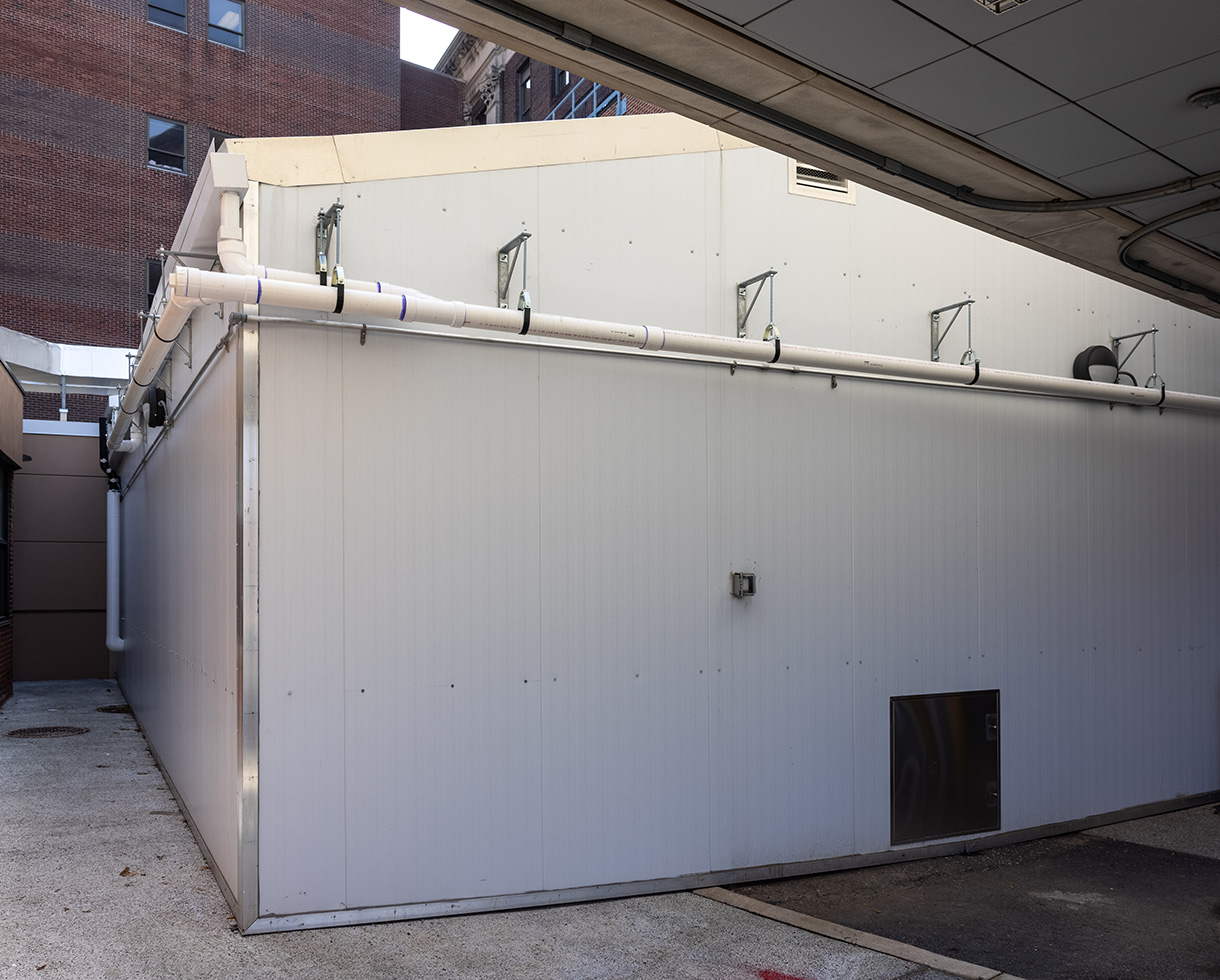
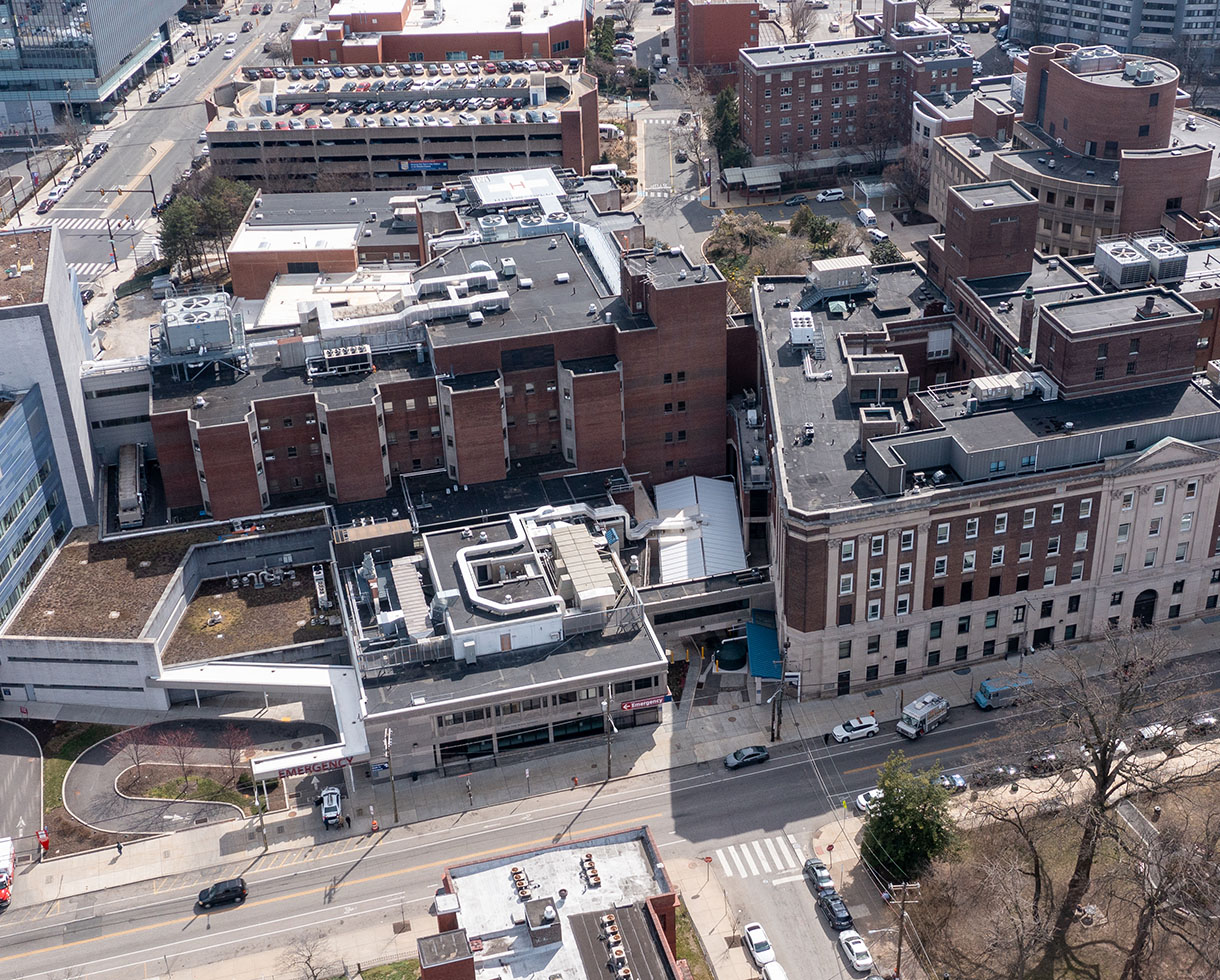
EP Lab 7
This project renovates an existing electrophysiology lab, control room, and equipment room in the Wright Saunders Building at Penn Presbyterian Medical Center. New Stereotaxis medical booms were installed to support clinical operations while the existing magnetic and radiographic shielding were modified to allow for the new imaging equipment. Other space reconfigurations included the system component room, the AHU and chiller in the ceiling, and the sprinkler system. An existing staff lounge was also relocated to build out a new Teledata Distribution Room to serve the entire floor of the building. All construction was completed in a single phase.
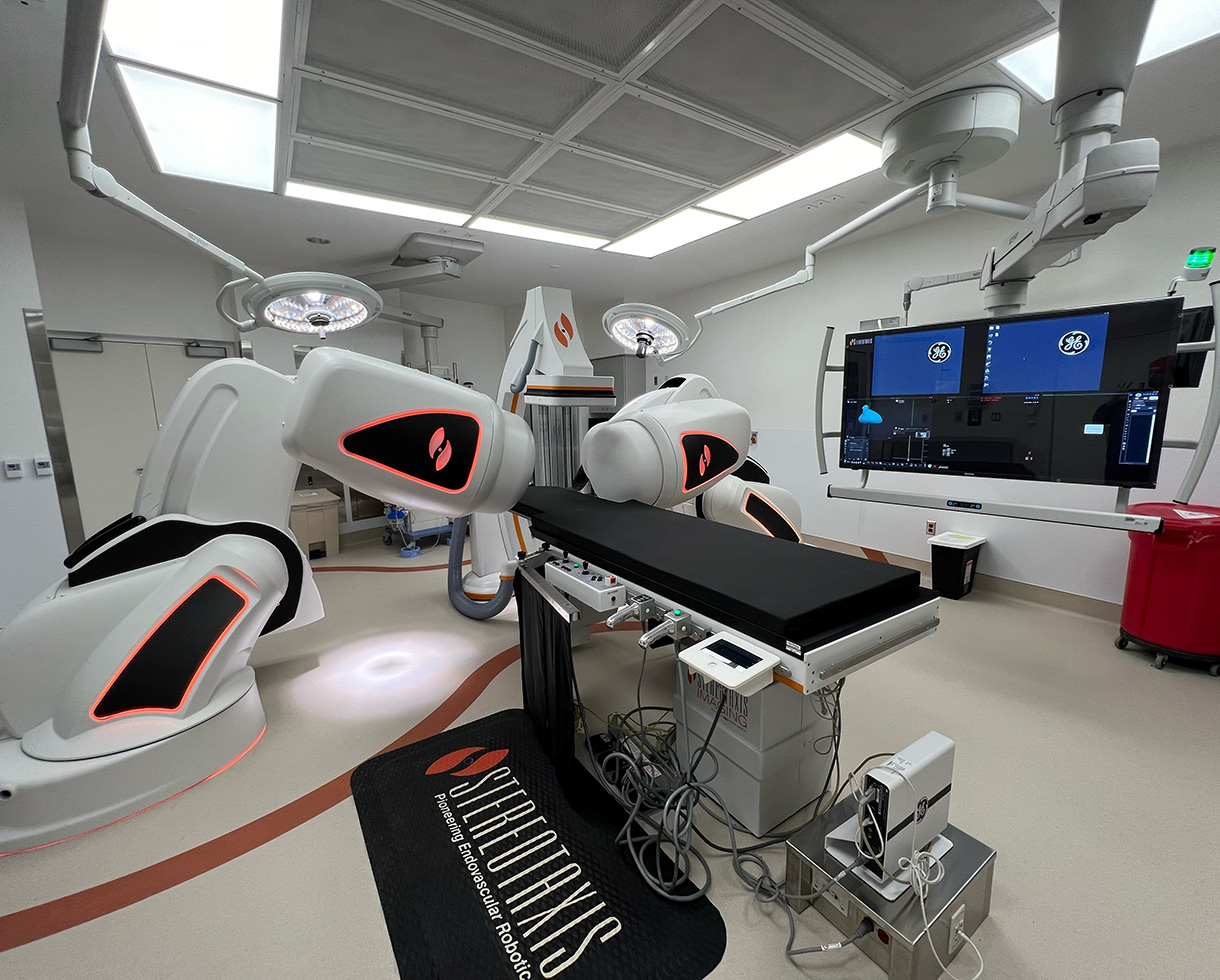
Cardiac Cath Lab Suite Relocation
The new suite includes 5 Cath Labs with either new or upgraded radiographic equipment, patient holding/recovery, staff lockers, utility rooms, mechanical room, and all other required support spaces.
We studied location options during a planning phase, determining that it was beneficial to relocate the suite rather than renovating within the existing footprint, resulting in lower construction costs and less disruption to patient care.
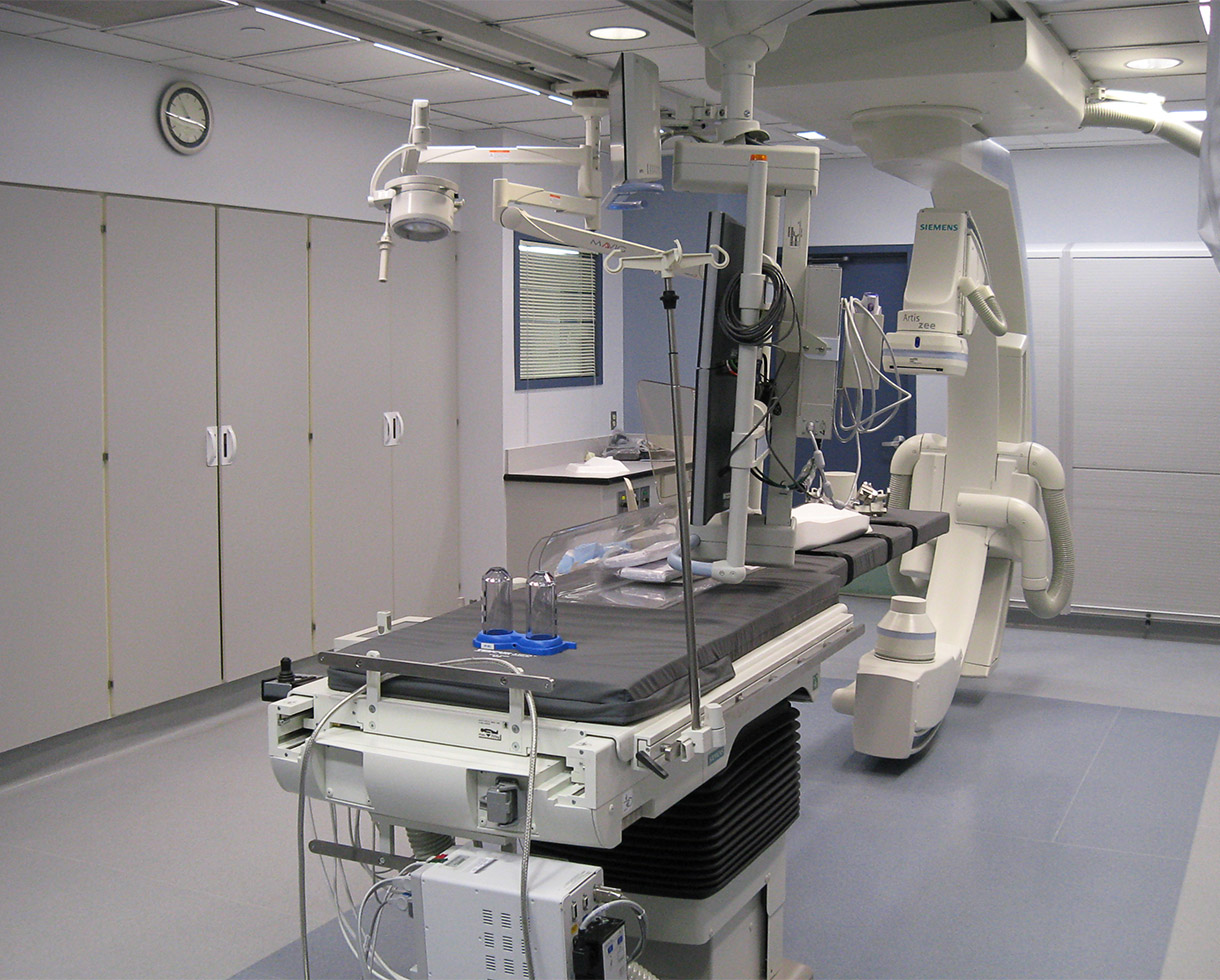
Hybrid OR 14
This project is the first phase of a conversion of existing operating rooms into hybrid ORs. Reconfigured spaces include the new OR, its control room, and support areas to be shared with the future adjacent OR including equipment room and scrub alcove. Scope includes reconfiguration of MEP systems and a new laminar flow system within the OR.
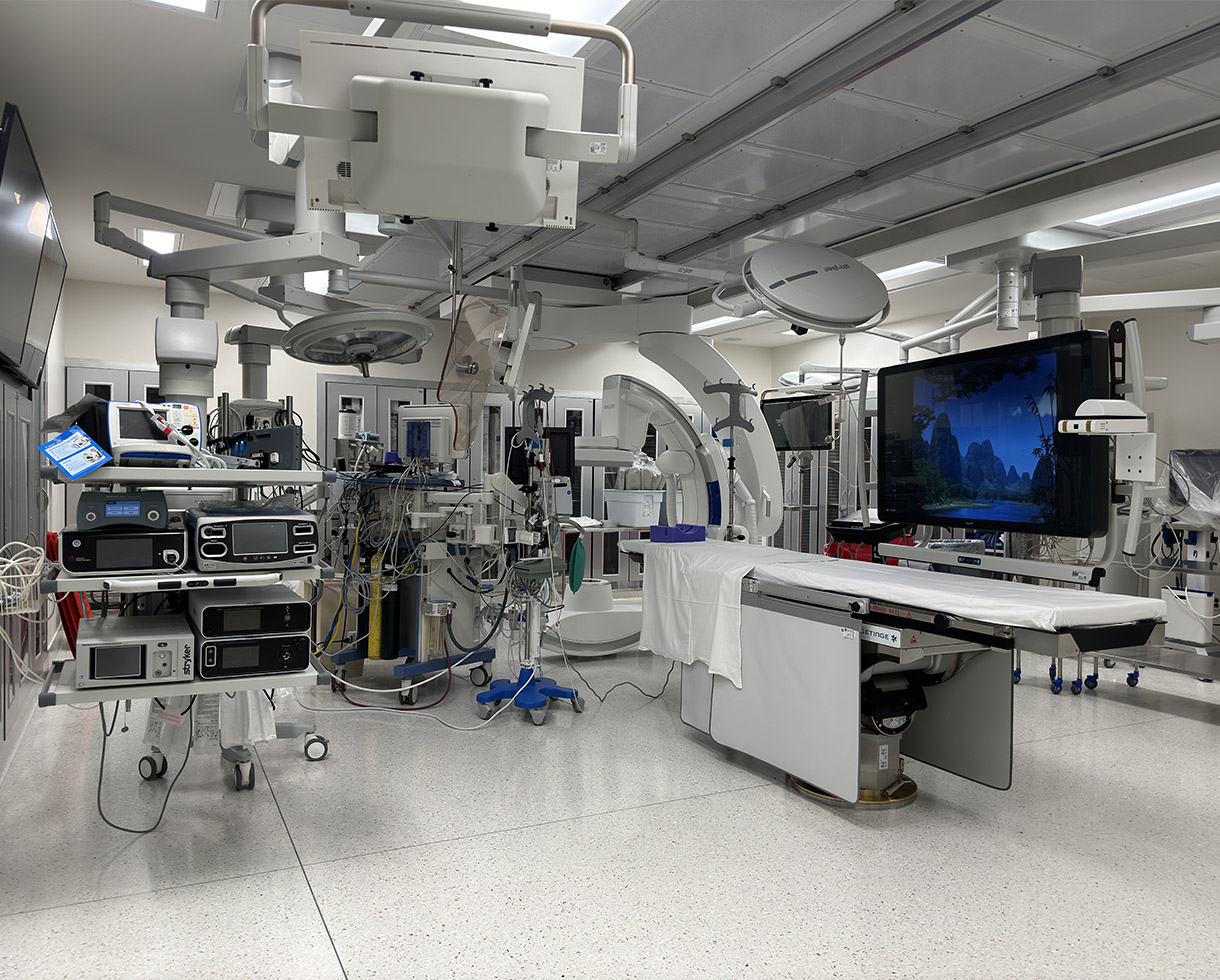
Lobby Renovations
This renovation created an inviting, comfortable, and efficient main hospital entrance from new automatic revolving doors through reconfigured waiting, registration, and support areas. Features include a backlit cast glass wall, new lighting and finishes throughout, and upgrades to the HVAC service.
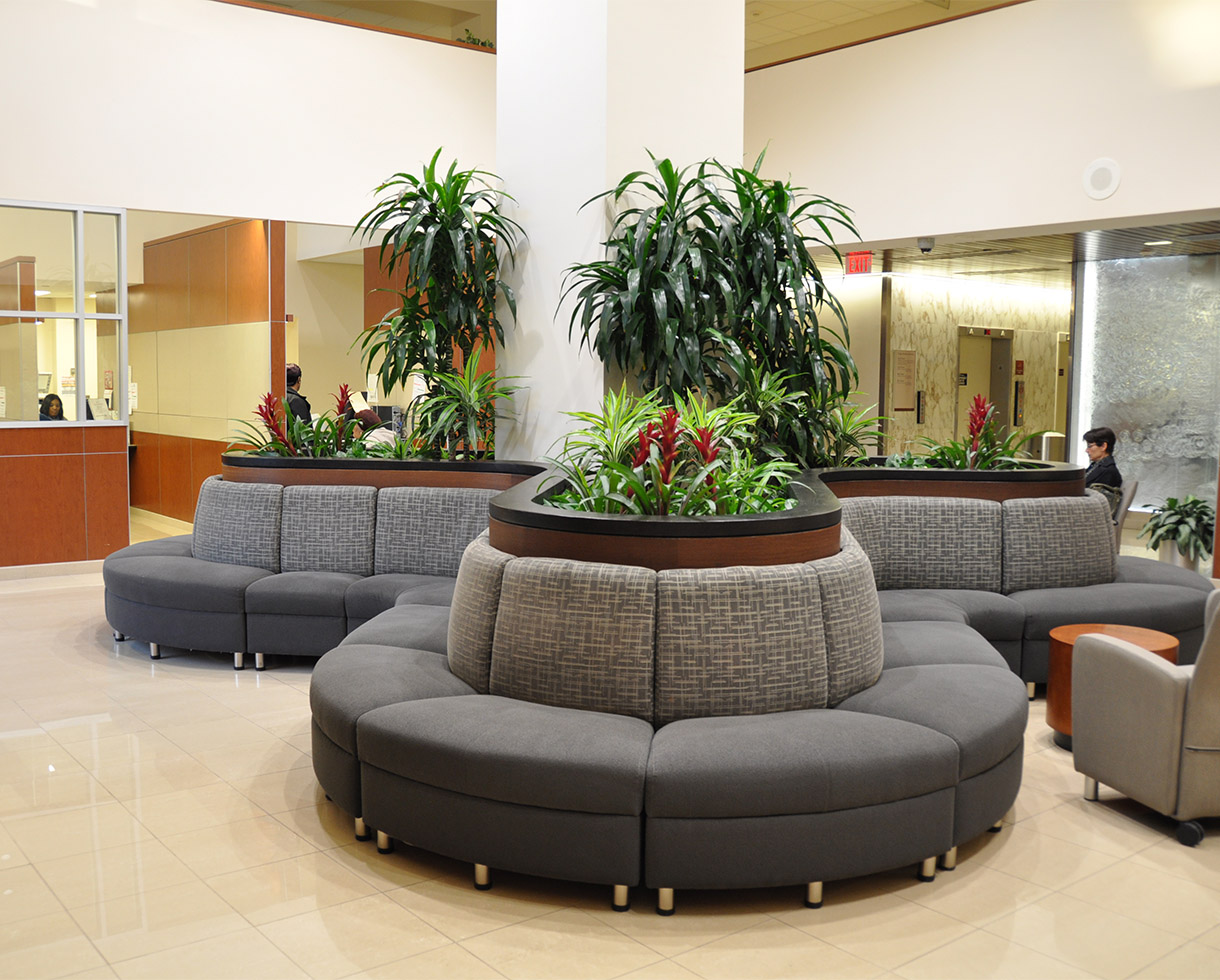
ORs & PACU Additions
Over the period of a decade, we designed multiple additions and fit-outs for eight operating rooms at this facility, including one of the first minimally invasive cardiac surgery facilities in the United States. A separate addition provided space for an expanded 15-bed post anesthesia care unit. Our most recent project added a hybrid (vascular) OR, general OR, and expanded the PACU.
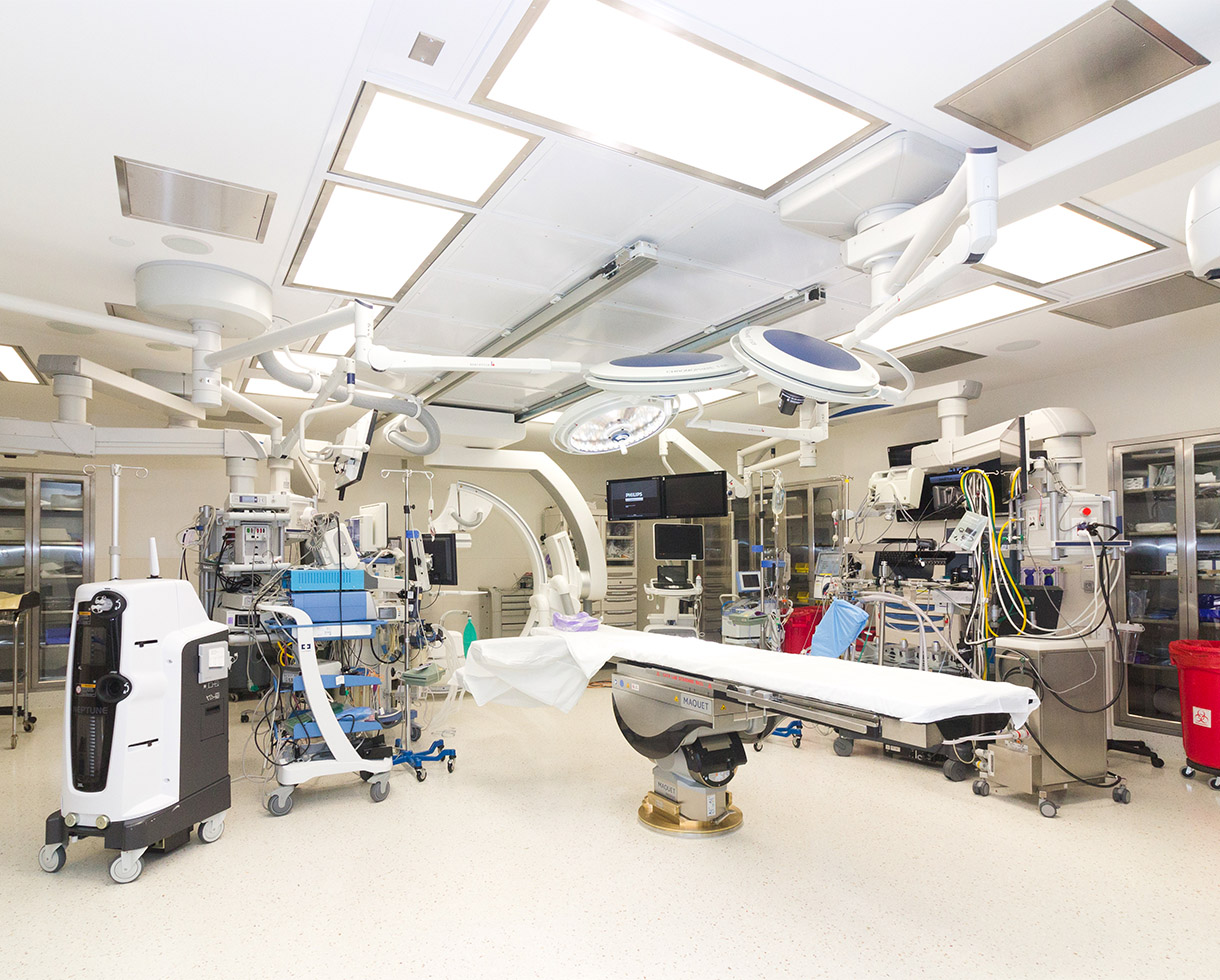
Outpatient Infusion Unit
This infusion unit features 3 private rooms and 13 treatment bays which look out onto a healing garden through floor-to-ceiling windows. Each patient station has individual lighting controls, ample space for family, and a personal television.
The program includes staff areas, exam rooms, waiting/reception rooms, and a pharmacy which meets USP 800 requirements. Infrastructure work included reconfiguration of building systems and supplemental air conditioning for the pharmacy.
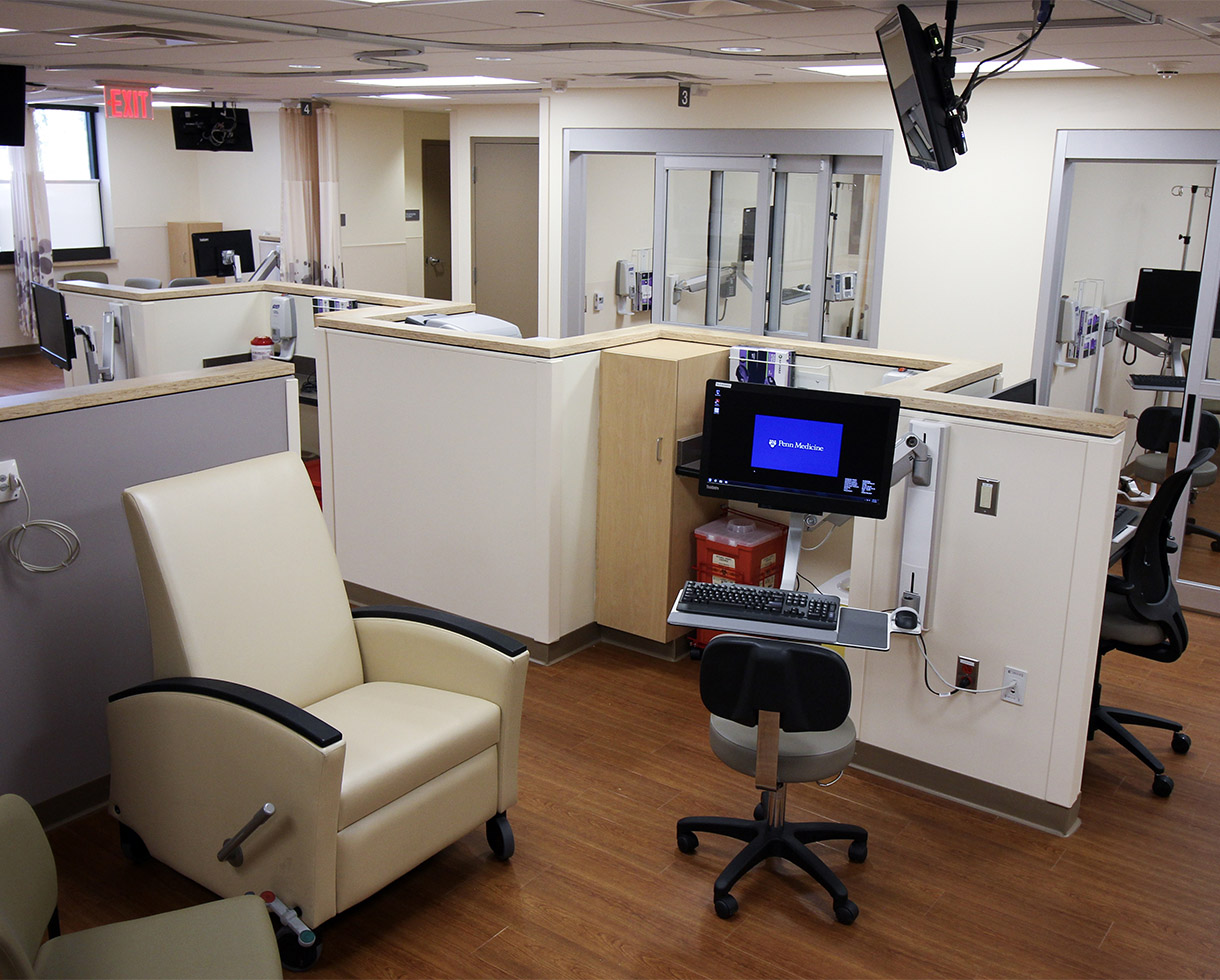
Surgical Intensive Care Unit
The design concept of this project was to provide a new 16 bed Surgical Intensive Care Unit near the recently expanded Surgical Suite. This was achieved by relocating the SICU into vacated office space on the second floor the Myrin Building allowing transportation of patients directly from the ORs and recovery areas to the unit without traversing public corridors.
The design of the unit is based on the “race track” concept with patient rooms are located on the perimeter of the unit with the nurse stations and staff functions located on the interior. The project was further defined into two distinct sub-units, general surgery and cardio-thoracic.
New HVAC and electrical infrastructure, including a new emergency generator, are housed in the penthouse above. Other features in this project were the installation of clerestory skylights, which provide light and view to interior patient rooms, and the use of ceiling mounted booms in all patient rooms to provide services.
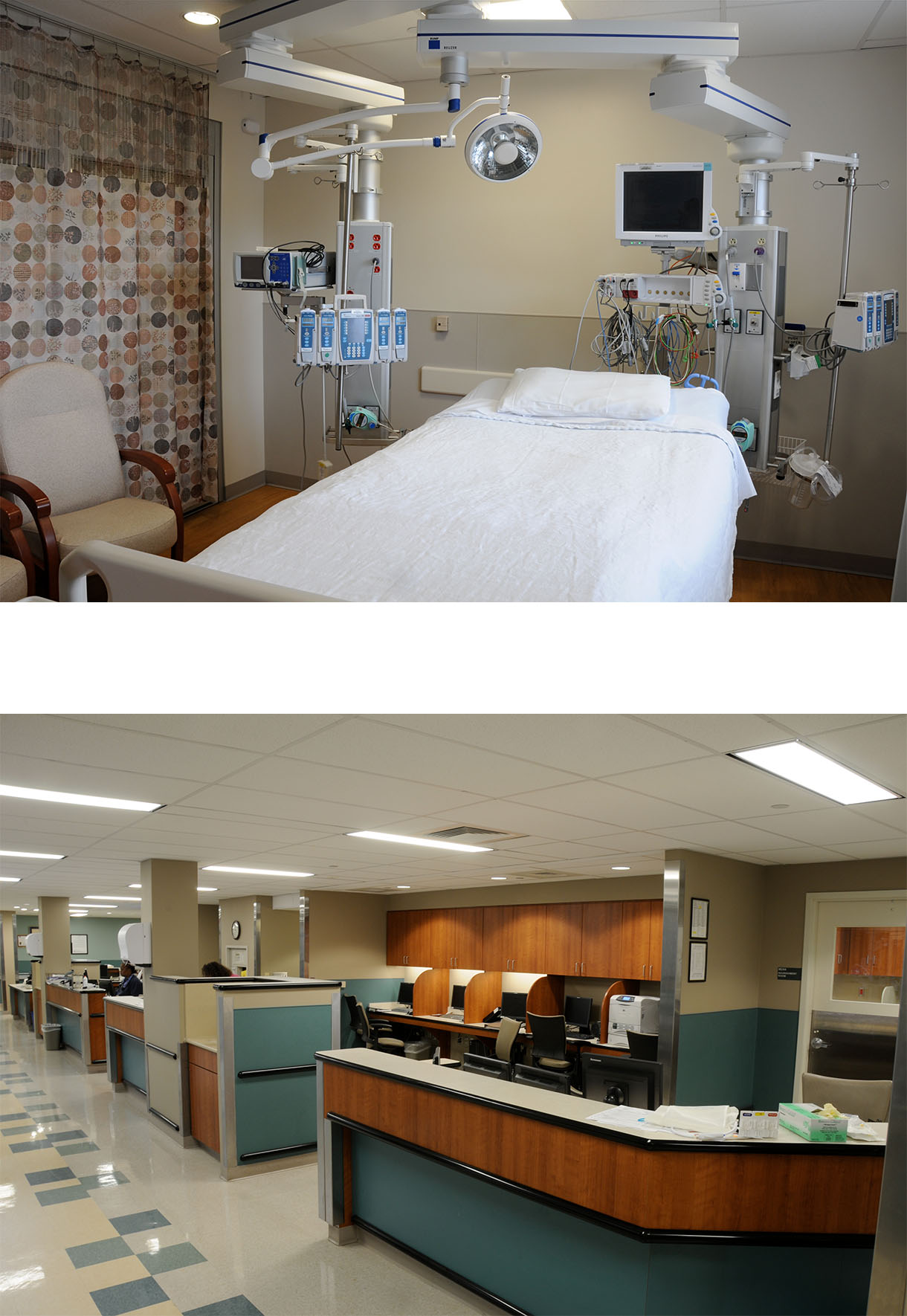
Scheie Eye Institute
As part of a comprehensive outpatient experience movement, the entry level of the Scheie Eye Institute was redesigned to create a sequence of welcoming and navigable spaces. The registration process was reconfigured with decentralized check-in desks providing streamlined access to renovated clinical areas. 30 exam rooms on the entry level and 5th floor were upgraded. The project included new lighting, acoustic dampening features, finishes, seating, and an Optical shop.
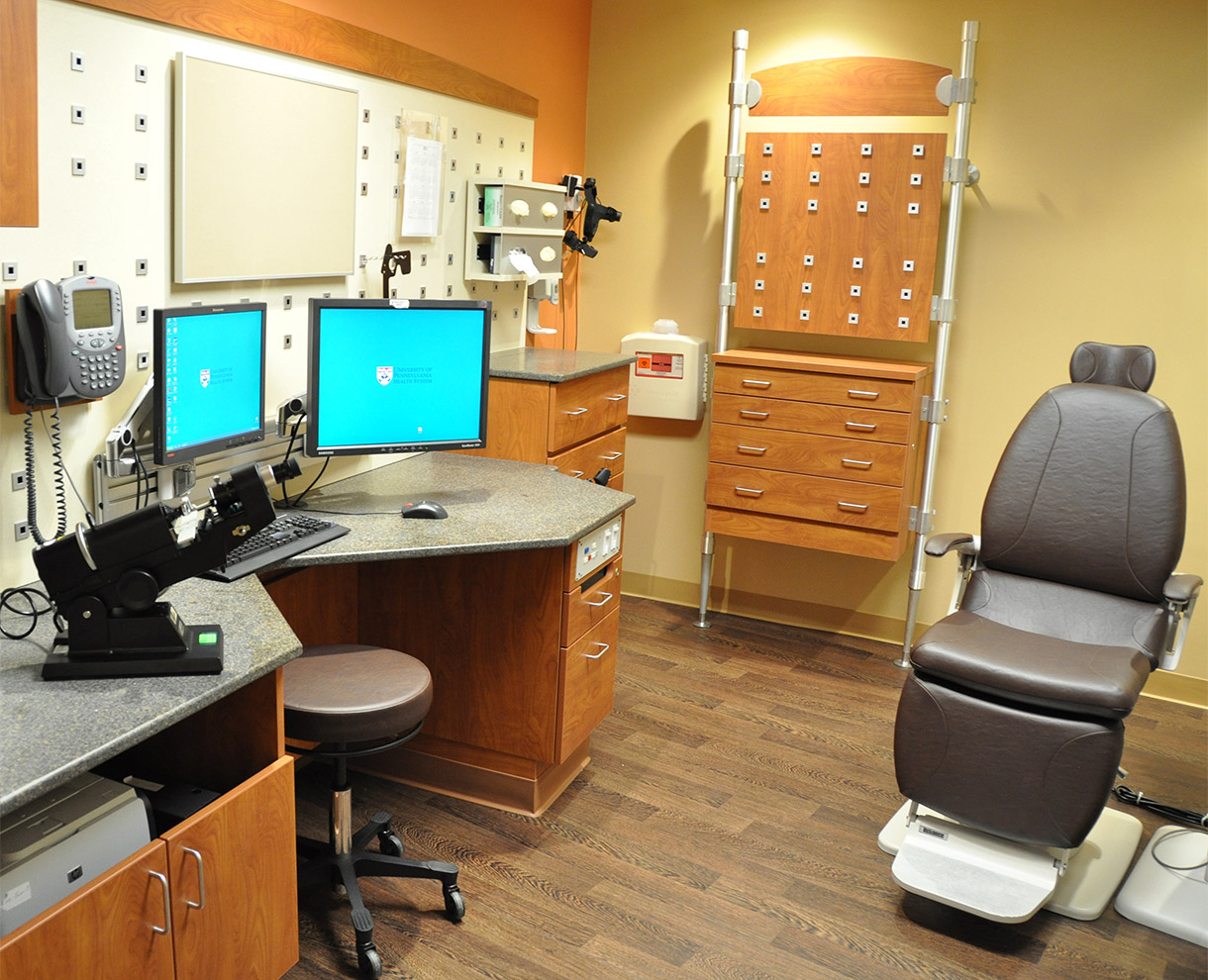
3T MRI Suite
This project was built within previously existing shell space on the first floor of the Pavilion for Advanced Care. In addition to the new 3T MRI scanner, it includes a procedure and recovery patient area, male and female changing and gowned waiting rooms, a patient toilet room, and a storage room.
The layout provides separate MRI safety zones as required by the American College of Radiology. The magnet room is located on the outside wall of the existing building, just off 38th Street, to allow for relatively easy delivery access of the magnet through the existing glass curtain wall and a short inconspicuous run for the quench vent.
The site’s location adjacent to a trolley line created a challenge for the vibration and acoustic requirements of the MR equipment. Our team designed a new recessed floating slab to be constructed beneath the magnet and table, providing an environment that meets the equipment’s criteria.
Existing mechanical and electrical systems were modified to accommodate the new equipment and program spaces.
